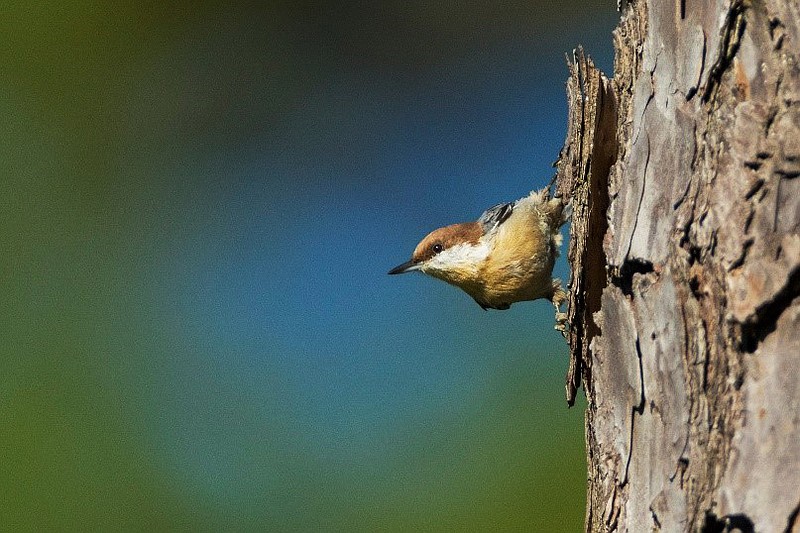For the first time in nearly a century, the squeaky call of the brown-headed nuthatch can be heard in Missouri.
Last week, 25 of the small songbirds were reintroduced to restored pine woodlands in the Mark Twain National Forest.
Bringing back the songbird took a group effort from the Mark Twain National Forest, the Missouri Department of Conservation, Ouachita National Forest, the U.S. Forest Service's Northern Research Station, the University of Missouri, Tall Timbers Research Station and the Arkansas Game and Fish Commission.
"We could not have pulled off this project without all of these partners," MDC state ornithologist Sarah Kendrick said.
Kendrick, University of Missouri research professor Thomas Bonnot and U.S. Forest Service Northern Research Station research biologist and MU cooperative professor Frank Thompson were a part of the team that brought the birds back.
"I first became involved about five years ago as part of my research dealt with landscape conservation planning - helping them identify the strategies and best ways to restore a habitat or an ecosystem," Bonnot said.
Brown-headed nuthatches disappeared from Missouri back in the 1930s and 40s - a casualty of the destruction of the shortleaf pine woodlands that covered the Ozarks before settlement and widespread logging changed the ecosystem.
The U.S. Department of Agriculture Forest Service has spend the past decade restoring 88,000 acres of pine oak woodlands in the Mark Twain National Forest.
"I think its really fascinating and one of the things that strikes me and gives me a lot of joy as a conservation scientist, is that these plans take years and years to be implemented," Bonnot said. "It's only on rare occasions where we see an immediate impact of our work. Now that we have the habitat, we can bring them back and have a population in a month - it's neat to see the fruits of our labor in such an immediate way."
The woodland environment is slightly different than what most people likely imagine when they think of a forest - instead of thick canopies blocking out light and preventing undergrowth, the type of woodland where brown-headed nuthatches make their homes is more open.
The bird needs "open woodlands with a grassy, herbaceous understory and pine trees in the overstory," Bonnot said.
Nuthatches dig out cavities in dead pine trees. This means an area that is overmanaged wouldn't be suitable for the bird either - it needs the pine snags.
When a nuthatch abandons a cavity, it leaves a home for other songbirds or woodpeckers to move into.
"They have a very specific, but important role in a pine woodland," Bonnot said.
When it became clear the Missouri woodlands had been restored to a state favorable to the songbird, the team began figuring out how to get it to Missouri.
Brown-headed nuthatches are weak fliers and the nearest populations live to far to make it to Missouri on their own. But, if you can catch one, you can transport it somewhere else. The reached out to places were similar reintroductions had successfully taken place.
"There have been a few previous reintroductions in Florida - about 40 nuthatches in the late 90s to the Everglades and others reintroduced by Tall Timbers Research Station," Kendrick said. "All have gone really well."
The team traveled to Ouachita National Forest in late August with the intention of trapping 50 birds.
"Out main concern was the health and safety of the bird," Bonnot said.
Rainstorms and foul weather caused by Hurricane Laura cut the trip short. The group caught 25 birds using lightweight nets.
The plan is to return again later this year to collect another 25 birds. Next year, an additional 50 birds will be reintroduced to bring the Missouri brown-headed nuthatch population to 100.
"It's pretty neat having a species that belongs here back here," MTNF public affairs officer Cody Norris said.
This article was edited at 12:41 p.m. Sept. 8, 2020, to add Tall Timbers Research Station to the list of groups helping in the songbird effort.

